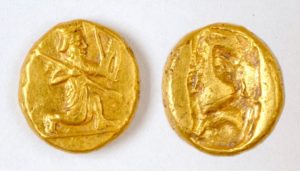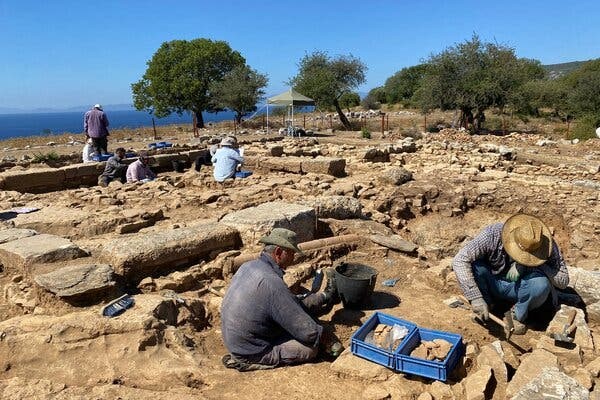Archaeologists in Izmir have revealed that 2400-year-old gold coins have been found intact.
The New York Times related that the remains of Persian coins revealed the political landscape during the Peloponnesian War, and that a small jar called Olpe was buried underground in the late fifth century BC and contained many gold coins. The coins were buried in the corner of a building.
It was also announced that Olpe, which is thought to have belonged to a soldier, contained a large number of gold coins known as darik, equal to the soldier’s monthly salary.
The coins at Notion show the image of a Persian king on his knees, wearing a tunic. He was seen holding a bow in his left hand and a long spear in his right hand. It was stated that the backs of the coins were generally blank. The coins were exhibited in the Ephesus Archaeological Museum.
Christopher Ratte, an archaeologist working at the University of Michigan, one of the leading universities in the US, and his research team were considering such a scenario for the coins he unearthed in the ruins of Notion.
Dr. Ratte, who continues his work in the ruins of the ancient city-state of Notion in western Turkey, said, “The coins were buried in a corner of an old building. We were not actually looking for a pot of gold.”
“This type of hoard has never existed before in this region,” said Andrew Meadows, an archaeologist at Oxford University who was not involved in the research but spoke to the newspaper. “So the significance of this discovery is huge. The archaeological context of this hoard will help us fine-tune the chronology of the Achaemenid gold coins.”
“This was also true in the deepest antiquity, as the story of the Trojan War recalls. This remains true today, as the Syrian refugee crisis has shown,” said Dr. Ratté. He recalled that the small port on the eastern side of the city was one of the departure points for Syrian refugees who fled to Europe via Turkey during the refugee crisis a decade ago.
It was noted that Anatolia was home to the first state-issued coin in the Western world and that Kroisos, the son and successor of the Lydian king, minted the first real gold coin, the Croeseid, while it was recalled that the region known as Ionia was conquered by the Persian Empire in 546 BC. Despite this, the monetary system established by Kroisos continued to exist.
It was stated that the Persians continued to produce Kroisos until they produced their own coins, and that later the Ancient Greeks captured Notion and the Athenians used it as a naval base.
Dr. Ratte also explained that there was a major naval battle in the Peloponnesian War between Athens and Sparta, and there may be a connection between the battle off the coast of Notion, which the Athenians used as a naval base, and the gold hoard found there.
Dr. Ratté believes that the fact that the loot was never recovered is a clear sign of disaster. “No one would bury a hoard of coins, especially precious metal coins, without the intention of retrieving them. So only great misfortune can explain the preservation of such a treasure,” he said.
